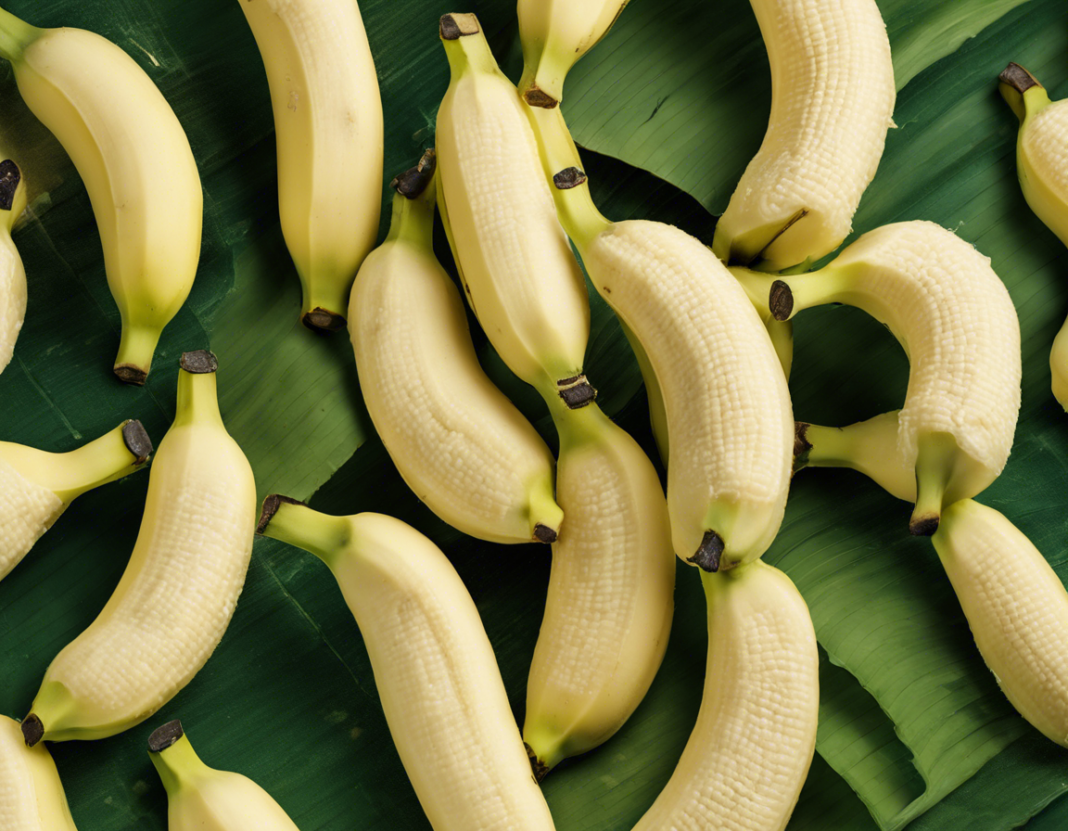Genetically modified organisms (GMOs) have long been a controversial topic, with heated debates surrounding their safety, ethics, and environmental impact. One of the most famous examples of GMOs is the modified banana strain, which has seen significant advancements and updates in recent years. In this article, we will delve into the latest exciting updates on the modified banana strain, exploring the science behind it, its potential benefits, and addressing common concerns.
The Science Behind Modified Banana Strains
Genetic modification of bananas involves the introduction of foreign genes into the banana’s DNA to confer specific traits such as disease resistance, improved shelf life, or increased nutritional content. One of the key objectives of modifying banana strains is to combat diseases that threaten banana crops worldwide, such as Panama disease and black Sigatoka.
Researchers have made significant strides in identifying and incorporating genes that confer resistance to these diseases into banana plants. Through techniques like gene editing and transgenesis, scientists can precisely insert these beneficial genes into the banana genome, creating disease-resistant banana strains.
Potential Benefits of Modified Banana Strains
The development of disease-resistant banana strains offers a plethora of benefits to farmers, consumers, and the environment. Some of the potential advantages include:
1. Increased Crop Yield
By protecting banana plants from devastating diseases, modified banana strains can increase crop yield and ensure a more stable food supply. Farmers can expect higher productivity and reduced economic losses due to disease outbreaks.
2. Enhanced Nutritional Value
Researchers have also been working on developing nutritionally enhanced banana strains, enriched with essential vitamins, minerals, or other nutrients. This could address nutritional deficiencies in regions where bananas are a staple food.
3. Sustainable Farming Practices
Disease-resistant banana strains can reduce the need for chemical pesticides, promoting more sustainable farming practices and minimizing the environmental impact of banana cultivation.
4. Improved Food Security
With a more robust and disease-resistant banana crop, communities that rely on bananas as a primary food source can enjoy improved food security and resilience to external factors that may affect crop production.
5. Enhanced Shelf Life
Some modified banana strains have been engineered to exhibit extended shelf life, reducing food waste and improving post-harvest management.
Addressing Concerns about Modified Banana Strains
Despite the potential benefits of modified banana strains, there are valid concerns and criticisms surrounding GMOs in general. Here are some common issues raised by critics and stakeholders:
1. Environmental Impact
Critics argue that GMOs may have unintended consequences on biodiversity, ecosystems, and organic farming practices. The potential spread of genetically modified traits to wild plant populations is also a concern.
2. Health and Safety
The safety of consuming GMOs remains a contentious subject. While regulatory bodies assert that approved GMOs are safe for consumption, some studies suggest potential health risks that merit further investigation.
3. Socioeconomic Implications
There are concerns about the economic implications of adopting GMO crops, particularly for small-scale farmers in developing countries. Issues related to intellectual property rights, access to seeds, and market monopolies have been raised.
4. Labeling and Transparency
Advocates for GMO labeling argue that consumers have the right to know whether their food contains genetically modified ingredients. Transparency in labeling and communication is essential for informed decision-making.
Frequently Asked Questions (FAQs) about Modified Banana Strains
Q1. Are modified banana strains safe to eat?
A1. Regulatory agencies have approved certain genetically modified banana strains as safe for consumption, following rigorous testing procedures.
Q2. How do modified banana strains help farmers?
A2. Disease-resistant banana strains can help farmers by reducing crop losses due to diseases, thus enhancing productivity and income.
Q3. Can modified banana strains crossbreed with wild banana varieties?
A3. There is a possibility of gene flow between modified banana strains and wild bananas, raising concerns about potential environmental impacts.
Q4. Are there non-GMO alternatives to combat banana diseases?
A4. Traditional breeding methods, agroecological practices, and biocontrol methods are some non-GMO alternatives to address banana diseases.
Q5. Do modified banana strains require special growing conditions?
A5. In most cases, modified banana strains can be grown under similar conditions to conventional bananas, with no significant changes in cultivation practices.
In conclusion, the advancements in modified banana strains represent a promising avenue for enhancing global food security, agricultural sustainability, and nutritional quality. While there are legitimate concerns surrounding GMOs, ongoing research and regulatory oversight aim to address these issues and ensure the responsible development and deployment of genetically modified crops like disease-resistant bananas. Stay tuned for further updates on this exciting field of agricultural innovation.











